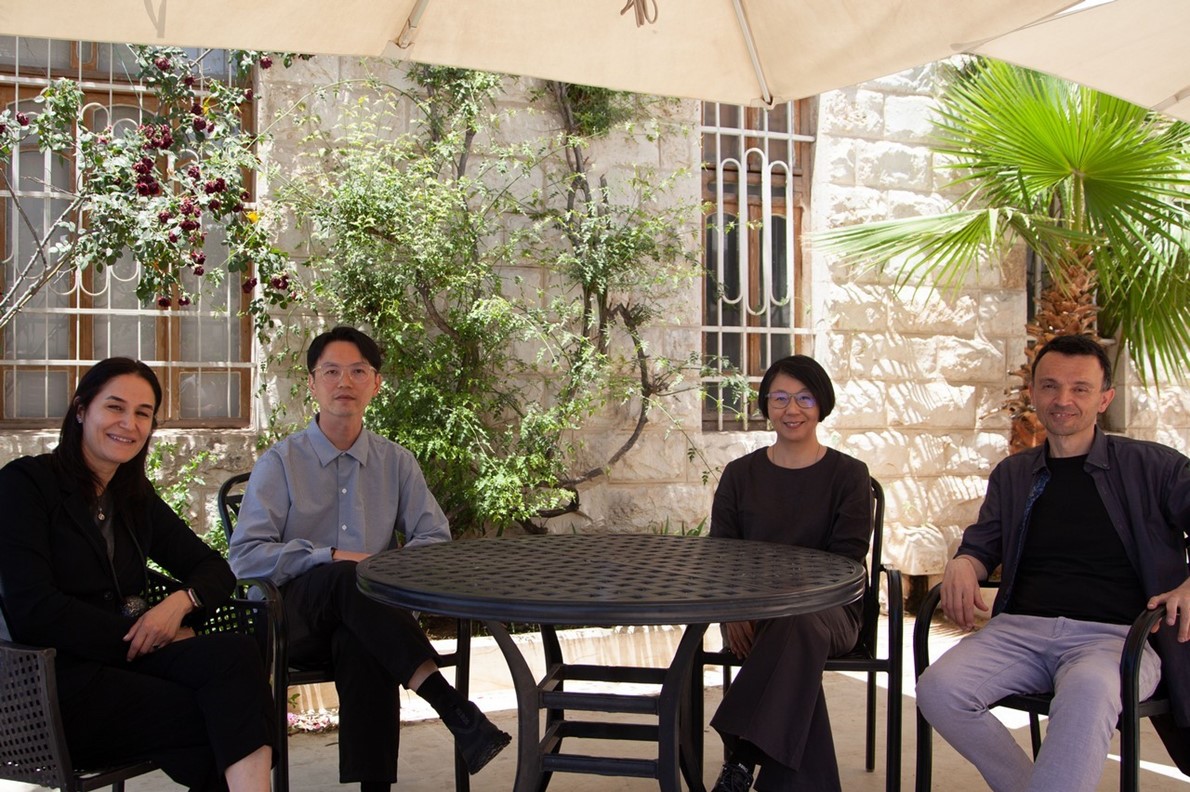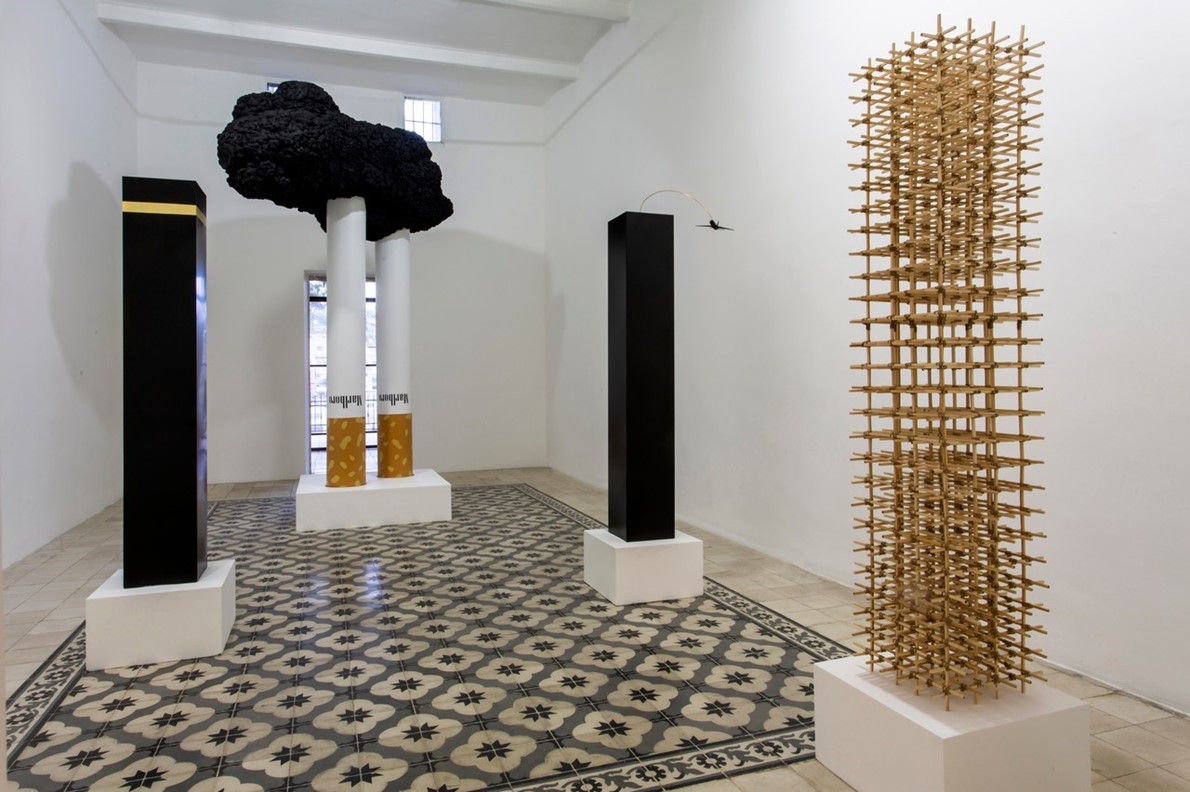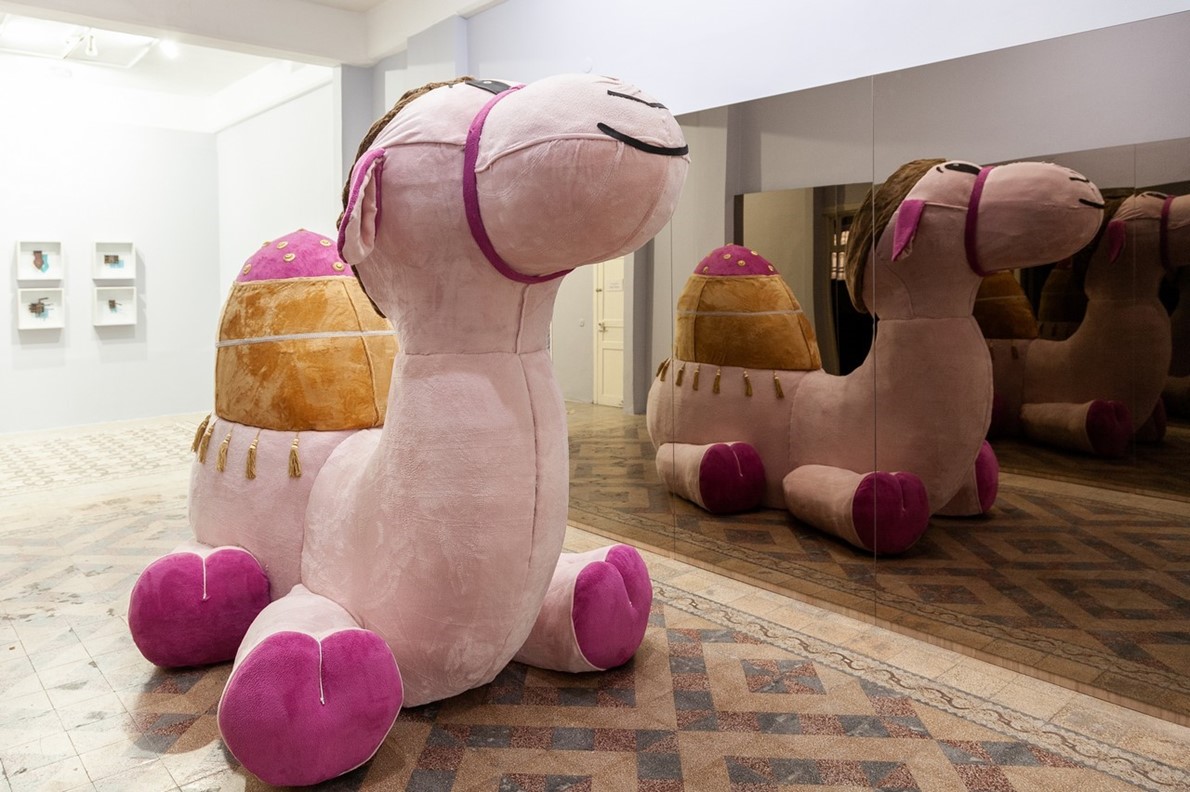Artistic residencies have long been a haven for creators seeking supportive
environments and friendly atmospheres to learn and grow. Cross-cultural
artistic residencies facilitate exchange,
experimentation, global cooperation,
and dialogue — all of which lead to understanding and finding common grounds to
tell stories through art.
اضافة اعلان
The Singapore Biennale 2022 (SB22), in partnership
with Darat Al-Funun, is holding an artist residency-exchange program between
Jordan and Singapore. Luma Hamdan, the director of
Darat Al-Funun, highlighted
the importance of such partnerships between regional and international art
institutions in their facilitation of research, talks, theoretical, and
practical interventions in the context of contemporary art.
The Singapore Biennale, which has been held
bi-annually since 2006, is Singapore’s esteemed platform for contemporary art.
Through exhibitions, performances, workshops, and events, it fosters
collaboration while allowing artists, businesses, and groups to engage with the
community.
The seventh edition of the Singapore Biennale —
organized by the Singapore Art Museum (SAM) and commissioned by the National
Arts Council — will take place from October 16, 2022 to March 19, 2023. It is
the first time that a biennale has been given a name: Natasha.

SB22 is co-curated by four artistic directors: Binna
Choi, a South Korean curator based in Utrecht; Nida Ghouse, an Indian curator
based in Berlin;
Ala Younis, an artist and curator based in Amman; and June
Yap, SAM’s director of curatorial collections and programs.
“The process of organizing a biennale requires
creative and practical steps. They are themselves journeys that linger in
behind the scenes for a while before bringing outcomes in an exhibition or
event. Making art and producing an international contemporary art exhibition
for Singapore and the region are exercises in connecting worlds together,” said
Younis in her official statement.
Ibrahim’s work raises questions surrounding the unsettling political, social, and economic conditions of our world in crisis. It usually delves into the complexities of Middle Eastern identity, memory, and Israel’s occupation of Palestine.
The first phase of the program kicked off with
Singaporean media artist Ong Kian Peng, whose residency runs from May 16 to
July 31, 2022. Ong’s work explores the effects of climate change and people’s
relationship with nature. Ong develops immersive and reflective environments
that imagine alternate visions of our connection to the natural world.
Jordanian artist
Raed Ibrahim will work in Singapore
from September to November of this year for the second phase of the residency.
Ibrahim participated in Darat Al-Funun’s Summer Academy from 2000 to 2003, and
was an artist-in-residence in an exchange program between Darat Al-Funun and
ProHelvetia in Switzerland.
Ibrahim’s work raises questions surrounding the
unsettling political, social, and economic conditions of our world in crisis.
It usually delves into the complexities of Middle Eastern identity, memory, and
Israel’s occupation of Palestine.
In a round table discussion with Jordan News at Darat Al-Funun, Hamdan, Yap, Ibrahim, and Ong discussed the details of the
residency.
“It actually all starts with the Biennale and its
four artistic directors. We had started a conversation about what to do with
the SB22 during the pandemic: a situation where we felt very isolated when
every country closed their borders. In art and culture, we’re very used to
contact and relationships developed because of cultural exchange and that all
kind of stopped during the pandemic itself, so we felt this very strong sense
of loss: of our space, space of relation. We wanted to refocus and think about
this human contact, whether it’s between artist to artist or even artists to
public. It also allowed us to think about the role of the artist in the
Biennale itself, so the artist is not just there to produce works,” said Yap.
 Age of Terror (right), past work of Raed Ibrahim, on display at Darat Al-Funun.
Age of Terror (right), past work of Raed Ibrahim, on display at Darat Al-Funun.
She spoke about the significance of SB22, saying it
is “about time” for the residency. “It’s not about the outcome. It’s a process,
it is time spent. From an institutional perspective, we’re just here to
facilitate that creating this space that is meaningful in itself, not just
because of itself,” Yap clarified.
Hamdan then detailed how this residency builds on
all the previous residencies established by Darat Al-Funun since 1995. “It was
an area in turmoil and artists needed residencies in a place that felt like
home. Our residences in the past were limitless, ... but with the pandemic, we
had to close and move the work online. This is actually the first residency we
hold after the measures has been lifted. We’re very proud for this partnership
with SB22,” Hamdan elaborated.
The artists-in-residence believe this opportunity
will contribute to their careers and ways of thinking. “Such an opportunity
would definitely expand my way of thinking and my experience, or at least give
it different dimensions. It also means that for a period of time you are in a
place to experience a different way of being,” said Ibrahim.
My initial interest was about the Dead Sea. Moving beyond the touristy images ... there’s the backend of this stark reality, sort of impending doom of the death of the Dead Sea. I was really curious about how the Dead Sea died and how it can die again.
According to Ibrahim, the
Jordanian art scene is
relatively small and has always been observing the West to expand its vision
and collective artistic practice. This prompted him to look to the East,
instead. He expressed his intrigue in exploring Singapore: a country with no
resources, yet booming in economic success.
Ong agreed with this idea of the West being the
dominant reference point for artist. “Personally, I also look at the East: in
China, Japan, Korea, etcetera,” he said, “but never have I ever looked at the
Middle East. We almost have no understanding of what people do here and what
kind of problems and concerns exists, or rather perhaps, (we have a) skewed
version of what is happening. I think one of the most meaningful things for me
is to come here and meet people.”
“I also believe this residency really allows me to
have the time and space that is very lacking for me in Singapore. Singapore is
a very different ecosystem; we are constantly in the production mode, the
production model where we are making work. We lack a lot of time and space to
really allow ourselves to delve, to think, to do something without the stress
of the capitalistic model of producing,” Ong continued.
 Camel in the Room, past work of Raed Ibrahim, on display at Darat Al-Funun.
Camel in the Room, past work of Raed Ibrahim, on display at Darat Al-Funun.
Regarding the level of exchange and learning this
opportunity provides, Yap claims “both artists are very special because they
are very open to new spaces.” She explained that the willingness for change is
perhaps “a point that we don’t think so much about sometimes when we talk about
residences, what it does, not just in its outward form, but what it does to you
in your mind and your memories.”
Both artists’ research will culminate in
presentations as part of the main exhibition in SB22. Ong’s research revolves
around climate change: “My initial interest was about the
Dead Sea. Moving
beyond the touristy images of people floating and looking really happy, there’s
the backend of this stark reality, sort of impending doom of the death of the
Dead Sea. I was really curious about how the Dead Sea died and how it can die
again. But I don’t really want to fix myself with that. I’m sure there are
alternate things for me to unravel here.”
“I’ve also heard a lot about the water crisis, the
socioeconomic problems surrounding water, so that’s also something I want to
look into. Maybe I won’t create works about that, but I also want to look into
it just for me to really not just come here and look at one thing and forget
about everything else, but to have a really good understanding of what water
is,” he expanded.
On the other hand, Ibrahim’s research focuses on
how, as a country, Singapore translates its political decisions into actions.
“From my research, I find the functionality, the efficiency, the
economy growth, and the structure to reach this point of becoming a worldwide model of
success, fascinating,” Ibrahim says. “I get to see it all from inside and from
this artistic surrounding. Not the PR experience but the reality of things as
they are.”
In closing, Yap expressed how this residency
represents a continual relationship between the Singapore Biennale and Darat Al-Funun.
As the founder of the latter,
Suha Shoman, presented works in
previous edition of the Biennale. “This partnership is not just about this
period of time. I think it’s more than that. Its effects are here to stay” Yap
concluded.
Read more Culture and Arts
Jordan News





